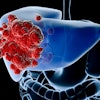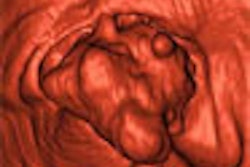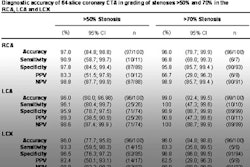By selectively irradiating blood vessels, Massachusetts Institute of Technology (MIT) researchers have ascertained at what point healthy tissue starts to degrade after radiation exposure. Their results have implications for radiation therapy and exposure, as well as for the long-term effects of both, the authors said.
"The cellular and subcellular events that eventually lead to the breakdown of tissue structure and function are initiated at the same time of irradiation," wrote lead author Bradley Schuller, a graduate student in the department of nuclear science and engineering at MIT in Cambridge, MA. "Our ability to preferentially increase endothelial cells allows direct testing of the role played by microvascular damage in the subsequent development of normal tissue damage" (Proceedings of the National Academy of Sciences, March 7, 2006, Vol. 103:10, pp. 3787-3792).
Schuller's co-authors include Jeffrey Coderre, Ph.D., from MIT and M. Frederick Hawthorne, Ph.D., from the department of chemistry and biochemistry at the University of California, Los Angeles.
Specifically, the group looked at the "possible role of vascular endothelial cell damage in the loss of intestinal crypt stem cells and the subsequent development of the gastrointestinal (GI) syndrome.... Doses above (about) 16 Gy sterilize virtually all of the crypt stem cells, resulting in complete loss of the intestinal villi and death from the GI syndrome in (approximately) four to five days."
Side effects from GI radiation therapy range from nausea or diarrhea within days of treatment to more serious tissue damage, such as scar tissue, that can manifest years later and affect normal function.
For this study, the authors injected mice with a boron concentration, then subjected them to whole-body neutron radiation. The total absorbed dose rate in the epithermal neutron beam was 0.57 ± 0.04 Gy·min-1 at a depth of 2.5 cm. The beam consisted of 77% low-linear energy transfer (LET) photons and 23% high-LET radiations. Other test mice were irradiated with a combination of radiation and liposomes.
The results showed that all the mice given 5.7 Gy lived beyond 30 days, which indicated that the beam dose was below the LD50 for death from bone marrow syndrome. As the dosage increased to 10 Gy, all the mice died within nine days. In the mice that received the 8.3 Gy beam-only dose, the intestinal mucosa showed signs of recovery. However, upping the dosage to 9.0 Gy resulted in "severely denuded" intestinal epithelium, which was indicative of death from GI syndrome.
"The histopathology from the neutron beam-only irradiation group indicates that the transition from bone-marrow-induced death to a GI-syndrome-induced death occurs at a whole-body absorbed dose between 8.3 and 9.0 Gy," the researchers wrote.
The group established a 9.0-Gy threshold for radiation dose before death from the GI syndrome. This insight into the sequence of steps that it takes for radiation-induced damage may also be applied to late fibrosis in other tissues, such as the lungs or kidney, they stated.
By Shalmali Pal
AuntMinnie.com staff writer
March 31, 2006
Related Reading
Radiation linked to thyroid nodules in atomic bomb survivors, March 2, 2006
Permanent seed implants reduce radiotherapy burden in breast cancer, January 5, 2006
Vertebroplasty packs radiation punch, but cement injector can soften blow, December 5, 2005
Copyright © 2006 AuntMinnie.com



















